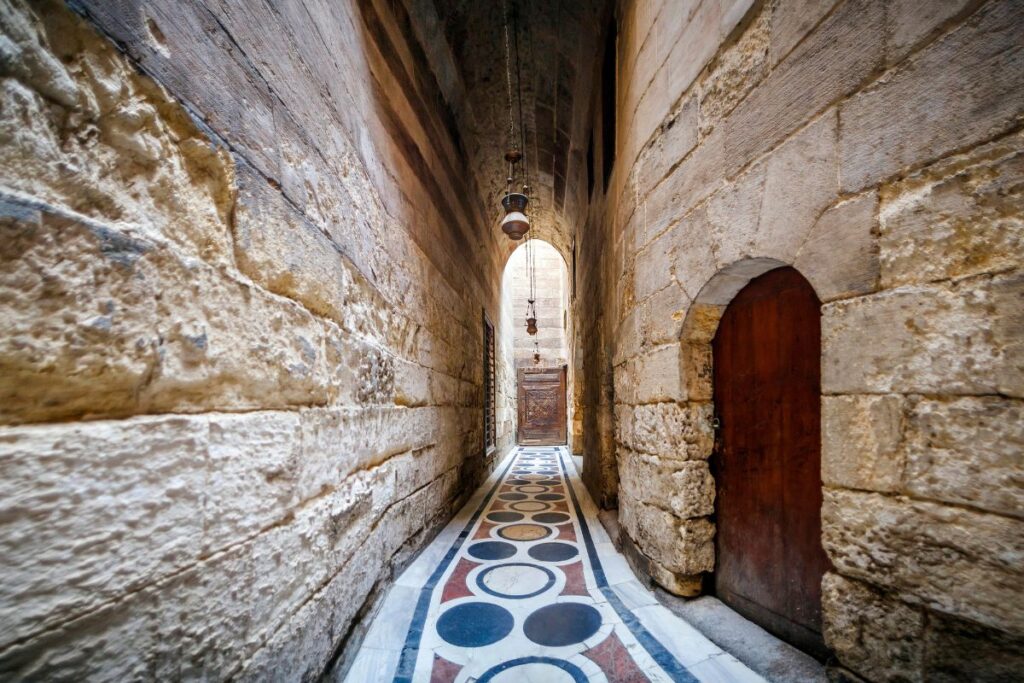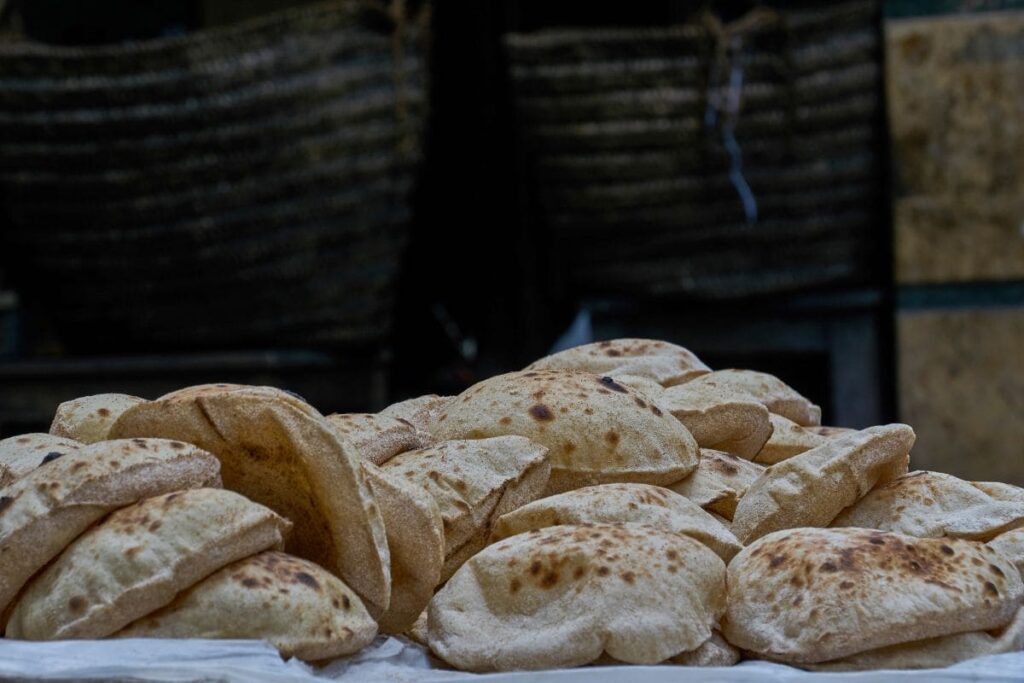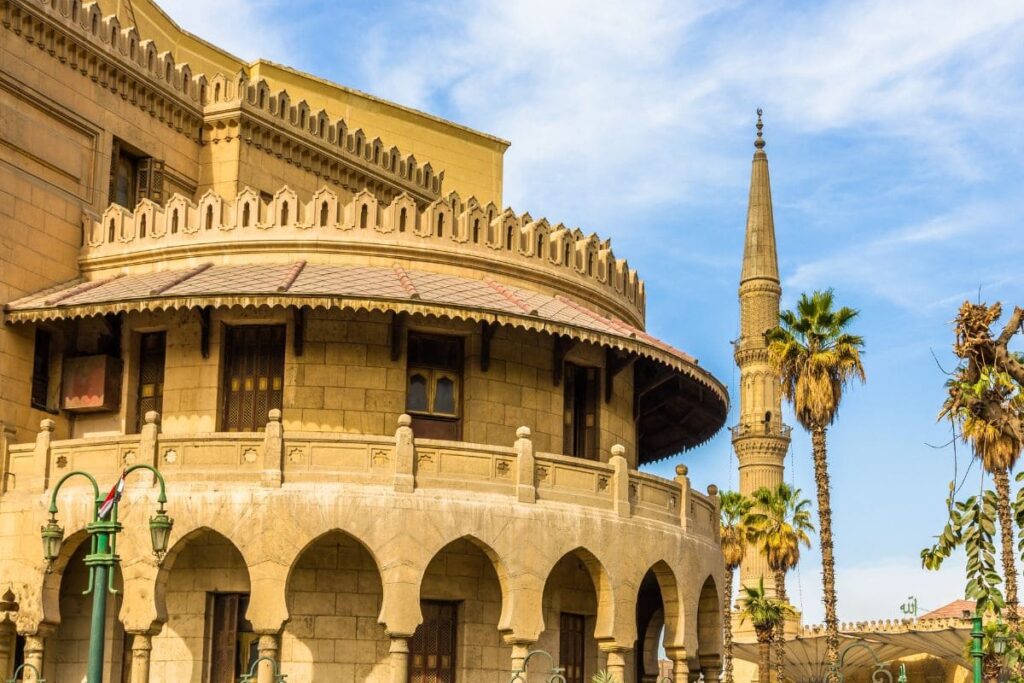Strolling Through History: A Visit to Cairo's Khan el-Khalili
In the heart of Cairo, amidst the labyrinthine alleys and vibrant pulse of the city, lies a marketplace that is not just a destination but a journey into the very soul of the city of Cairo itself. It’s known as Khan El Khalili, or Khan Al Khalili, depending on which echoes of Arabic you follow.
This isn’t a mere inconsistency in spelling but a fascinating glimpse into the linguistic tapestry that makes Egypt so unique. The Arabic language, with its rich history and dynamic present, is split into two main dialects: the formal, literary Arabic (Fosha) and the everyday spoken vernacular (Ammiya). This division leads to the charming linguistic dance where the same place can have two slightly different pronunciations, reflecting the diversity and richness of Egyptian culture itself
Both “Khan El Khalili” and “Khan Al Khalili” invite travelers and adventurers into a world where past and present coalesce, where the hustle of merchants, the scent of spices, and the kaleidoscope of crafts offer a sensory feast unlike any other. As a travel blogger deeply versed in the nuances of Egyptian travel, I’m here to guide you through this historical marketplace—not just as a destination on the map, but as an experience that embodies the heart of Cairo.
Whether you spell it with an ‘e’ or an ‘a’, Khan El Khalili stands as a testament to the enduring spirit of Egypt, a place where every alleyway tells a story, every shopkeeper holds a legacy, and every visit feels like stepping into a living tapestry of history.
Join me as we explore the magic of Khan El Khalili, where every corner reveals new wonders, and the rich tapestry of Egyptian culture unfolds in vibrant colors, tantalizing scents, and the unmistakable rhythm of Cairo. It’s more than just a market; it’s a journey into the essence of Egypt, where the past greets the present, and every traveler finds something to cherish. So, whether you’re a history buff, a lover of unique crafts, or simply in search of the soul of Cairo, Khan El Khalili awaits to cast its spell on you.
As you meander through the bustling lanes of Khan el-Khalili, you’re walking on the cobblestones of history. This isn’t just a market; it’s a time capsule in the heart of Cairo that offers a peek into a bygone era. The sounds of metalworkers and the scent of spices lead you on a journey back to the Mamluk period when this place first became a hub of trade.

Historical Background
Let’s rewind to the Fatimid era, from the 10th to the 12th centuries. Here, Cairo began as the vision of a Fatimid general, and Khan el-Khalili was part of the eastern palace’s southern tip, which also housed the Fatimid caliphs’ final resting place. Fast forward to the later Fatimid period, when the city’s gates were flung open to merchants, ushering in a new chapter of prosperity.
The real transformation came under Salah ad-Din (Saladin), who shifted Cairo from a secluded palace-city to a thriving economic center. The city’s heartbeat was the Qasaba (now al-Muizz Street), which became a canvas for sultans and elites to display their patronage through religious complexes and souqs, fueling Cairo’s ascent as a bustling hub of international trade.
The Mamluk era took this further, with charitable trusts known as waqfs financing grand projects like the complex of Sultan Qalawun, blending commerce with piety and public service. As Cairo’s economy boomed, its architecture evolved to keep up with the city’s dense population. Multi-story khans and wikala were constructed, offering a blend of accommodation and commerce under one roof.
Amidst this, Khan al-Khalili emerged, founded by a Mamluk sultan’s master of stables. It was more than a market; it was a statement of power and economic might, eventually becoming synonymous with the entire district. The construction of commercial buildings continued, with Sultan Qaytbay and his amirs adding their own touch to this growing commercial landscape.
The last noteworthy change came with Sultan al-Ghuri, who, in the early 16th century, gave the district a facelift, drawing inspiration from the commercial hubs of the Ottoman Empire. His projects included a grand Wikala and the Suq al-Nabulsi, marked by its monumental stone gates, imposing a sense of order with a systematic grid plan.
Today, Khan el-Khalili isn’t just a place to shop for souvenirs; it’s a living museum. The stone gates and the facades whisper stories of empires and the merchants who once walked these streets. As you explore this historic market, each corner tells a tale, inviting you to discover the rich tapestry of Cairo’s illustrious past.

Sensory Immersion
Imagine stepping into a world where every turn is a new adventure for your senses. The air is filled with the rich aromas of spices—cardamom, cinnamon, and saffron—mingling with the robust scent of freshly brewed coffee from age-old coffeehouses. Listen to the melodic symphony of shopkeepers’ calls, the clinking of metalwork, and the distant hum of lively conversations. Your eyes dance over a spectrum of colors, from the vivid hues of hand-woven textiles to the gleaming gold and silver of intricate jewelry. The touch of soft papyrus paintings and the cool, detailed metal lanterns tell stories of craftsmanship passed down through generations.
Personal Stories and Characters
The soul of Khan Al-Khalili resides in its people. From the elderly craftsman meticulously shaping copper into exquisite designs to the young artisan weaving magic into traditional fabrics, each shopkeeper and artisan has a story. Their warmth and hospitality are as much a part of the bazaar’s charm as the goods they sell. These personal connections provide a glimpse into the lifeblood of the market and the continuity of its traditions.

Cultural Tapestry
Khan Al-Khalili stands as a testament to Egypt’s rich cultural tapestry. Here, traditional Egyptian music fills the air, creating an atmosphere that’s both vibrant and nostalgic. The market is a living museum of crafts, from hand-carved wooden boxes to delicate glassware, each piece reflecting the diverse influences that have shaped Egyptian culture.
Architectural Wonders
While it may initially escape the attention of many visitors, a closer examination reveals a distinct architectural pattern among the buildings in the Khan El Khalili Bazaar. Each building is structured into three levels: the ground floor serves as a display area where vendors showcase their goods; the second floor is dedicated to the manufacturing and creation of these items; and the topmost floor is typically where the artisans and their families reside. Beyond this functional design, the bazaar stands as a marvel of Islamic architecture. Its labyrinthine alleys are lined with historic buildings that flaunt intricate arabesque designs, beautifully carved wooden facades, and ornate mosques. This rich architectural heritage not only tells tales of the bazaar’s glorious past but also offers a serene escape from the bustling market streets, making it a truly enchanting
The Art of Bargaining
Bargaining is more than just a transaction here; it’s a cultural dance, a playful exchange of words and smiles. It’s about building a connection, sharing stories, and understanding the value of the craft. I’ve learned that patience and respect are key, and the experience often ends with mutual satisfaction and sometimes, a cup of tea.

Culinary Excursions
Your exploration wouldn’t be complete without delving into the culinary delights of Egyptian cuisine. From the tantalizing flavors of koshari and falafel to the sweet, flaky layers of baklava, every dish tells a story of Egypt’s diverse heritage. Don’t miss the traditional coffee houses, where the ritual of coffee brewing and serving has been perfected over centuries.
The Changing Face of the Bazaar
As the world evolves, so does Khan Al-Khalili. Amidst the timeless traditions, signs of modernity peek through. Yet, there’s a concerted effort to preserve the essence of the bazaar. Artisans and shopkeepers adapt, incorporating contemporary methods while staying true to the ancestral crafts that define the market’s identity.
Practical Advice
For the intrepid traveler, the best time to visit is early morning or late afternoon to avoid the peak crowds. Navigate the bazaar with an open heart, and be mindful of local customs. Dress modestly, be prepared to haggle, and always ask permission before taking photographs.
Visual Storytelling
While words can transport you to Khan Al-Khalili, photographs capture its soul. Images of vibrant stalls, smiling faces, and architectural wonders complement the narrative, offering a glimpse into the vibrant life within the market’s walls.

Reflections and Insights
Through my journeys, Khan Al-Khalili has taught me the value of preserving culture while embracing change. It’s a place where every visit offers new insights and connections, a reminder of the beauty in diversity and the enduring spirit of Cairo.
Environmental and Social Consciousness
Sustainable tourism and preservation efforts are increasingly important in Khan Al-Khalili. Supporting local artisans, respecting the environment, and engaging with the community responsibly can ensure that this historical gem continues to thrive for generations to come.
Khan Al-Khalili is more than just a destination; it’s an experience that stays with you, a mosaic of history, culture, and human connection that embodies the heart and soul of Cairo.
Conclusion:
Khan El Khalili, the vibrant heart of Cairo, is more than just a bazaar; it’s a living museum where history and modernity intertwine, where each alleyway, scent, and sound tells a story of Egypt’s rich cultural tapestry. It’s a place where the past is not just remembered but vividly alive, pulsating through the bustling lanes and vibrant crafts that define this iconic market. The bazaar is a testament to the enduring spirit of Cairo, showcasing the beauty of Islamic architecture, the tradition of craftsmanship passed down through generations, and the unique culinary delights that reflect Egypt’s diverse heritage. Khan El Khalili is not just a destination for tourists; it’s a journey for anyone seeking to immerse themselves in the essence of Egyptian culture, to connect with the soul of Cairo through its people, its history, and its enduring legacy.
FAQ Section:
1. What is Khan El Khalili?
- Khan El Khalili is a historic bazaar located in the heart of Cairo, Egypt. It’s known for its vibrant marketplaces, rich history, and as a symbol of Cairo’s enduring spirit
2. How old is Khan El Khalili?
- The market’s foundations date back to the 14th century, during the Mamluk era, making it one of the oldest markets in the Middle East.
3. What can I buy at Khan El Khalili?
- Visitors can find a wide range of products including traditional Egyptian crafts, jewelry, spices, textiles, and souvenirs. Each item tells a story of Egypt’s rich cultural heritage.
4. Is bargaining acceptable in Khan El Khalili?
- Yes, bargaining is an integral part of the shopping experience at Khan El Khalili. It’s seen as a cultural dance, where respect and patience are key to finding a mutually satisfying deal.
5. What are the must-visit spots in Khan El Khalili?
- Beyond the market stalls, be sure to explore the historic mosques, the intricate Islamic architecture, and the traditional coffee houses where you can experience the ritual of Egyptian coffee brewing.
6. What are some tips for visiting Khan El Khalili?
- Visit during early morning or late afternoon to avoid crowds, dress modestly respecting local customs, be prepared to haggle, and always ask for permission before taking photographs.
7. How has Khan El Khalili adapted to modern times?
- While preserving its historical essence, Khan El Khalili has embraced modernity where necessary. Artisans incorporate contemporary methods in their crafts, ensuring the market’s relevance and vibrancy continues.
8. Why is Khan El Khalili important for Cairo?
- Khan El Khalili is not just a market; it’s a cultural landmark that represents the heart and soul of Cairo. It plays a crucial role in preserving Egyptian heritage, offering insights into
9. Can I find food in Khan El Khalili?
- Absolutely! The bazaar is also a culinary destination offering a taste of traditional Egyptian cuisine, from street food like koshari and falafel to sweet treats like baklava, and the essential Egyptian coffee experience in its historic coffeehouses.
10. How can I make the most of my visit to Khan El Khalili?
- Engage with the locals, explore beyond the main thoroughfares to discover hidden gems, take time to appreciate the craftsmanship in the goods, enjoy the culinary delights, and immerse yourself in the rich tapestry of stories that make Khan El Khalili a living piece of Cairo’s history.
Khan El Khalili is more than a market; it’s a bridge connecting the past to the present, a place where every visit enriches your understanding of Egyptian culture, history, and the vibrant spirit of its people. It’s an experience that goes beyond shopping, inviting you into a world where every corner has a story, every scent a memory, and every interaction a glimpse into the soul of Cairo.

Faris is the passionate founder of Travel2Egypt, deeply connected to Aswan’s essence. He aims to share the true heart of Egypt through its rich history, vibrant culture, and the warmth of its people. Join Faris to experience the magic of Aswan beyond the usual tourist paths.





